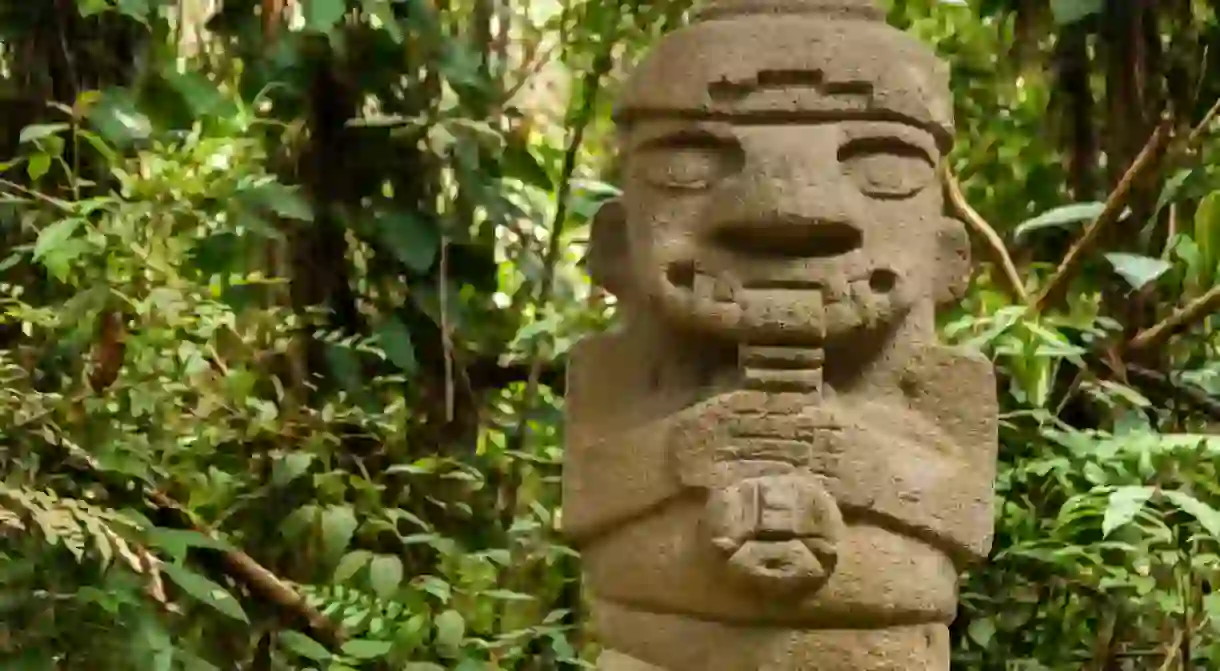The Mystery Behind The Ancient Statues of San Agustín

The UNESCO World Heritage site of San Agustín in the southern Colombian department of Huila is an archaeological mystery that has fascinated those studying it for years. Very little is known about the mysterious peoples who built the monuments, tombs, and statues that abound in the spectacular landscape of the region. A visit to San Agustín is a chance to experience firsthand the remarkable work left behind by a barely known culture.
At first glance, the small Colombian town of San Agustín appears little different to many other similar settlements dotting the Colombian Andean region: pleasant climate, picturesque cobbled streets, a few bars and restaurants, and very little else. However, San Agustín is unlike any other town in Colombia: it is the home of some of the most important archaeological sites in South America, the remnants of a mysterious ancient culture that flourished between the 1st and the 8th century BC.

Ancient ceremonial and burial sites are scattered over an area of roughly 250-square-miles, and visitors could spend weeks exploring all of the known sites. There are around 600 known statues and at least 40 monumental burial mounds dispersed throughout the Alto Magdalena region – around a third of the statues and half of the mounds are located within the boundaries of the San Agustín archaeological park, meaning that there is plenty to keep visitors busy.
The iconic statues range from tiny little monuments measuring less than half a metre, to giant, imposing figures of up to 7m high! They vary in style, depending on the period in which they were built. Some are highly abstract, depicting anthropomorphic figures, and some are much more realistic, with images of soldiers and mothers. Observers will spot images of sacred animals such as jaguars, frogs, and eagles. According to UNESCO, who named San Agustin a World Heritage Site in 1995, the San Agustin Archaeological Park, “bears vivid witness to the artistic creativity and imagination of a prehispanic culture that flowered in the hostile tropical environment of the Northern Andes.”

The real mystery of San Agustín lies in the identity of the skilled peoples who built these remarkable statues and burial sites. Archaeologists and anthropologists have been able to piece together some parts of their story: the earliest remnants of their culture date back to 3300 BC, and these archaeological sites were abandoned around 1350 AD. They were rediscovered in the 18th and 19th-centuries, and most of the burial sites were looted in search of gold (which turned out to be very scarce – the peoples of this region did not have much gold).
So very little is known about the ancient peoples of San Agustín or their culture: they had no written language and had already disappeared several centuries before Europeans arrived in this part of the world. But their legacy is sealed regardless of how much or little we can learn about them – after all, they were responsible for building “the largest group of religious monuments and megalithic sculptures in South America.” This mystery is unlikely to be solved anytime soon, but a visit to San Agustín isn’t about solving mysteries, it’s about experiencing the wonders of a lost civilisation.














